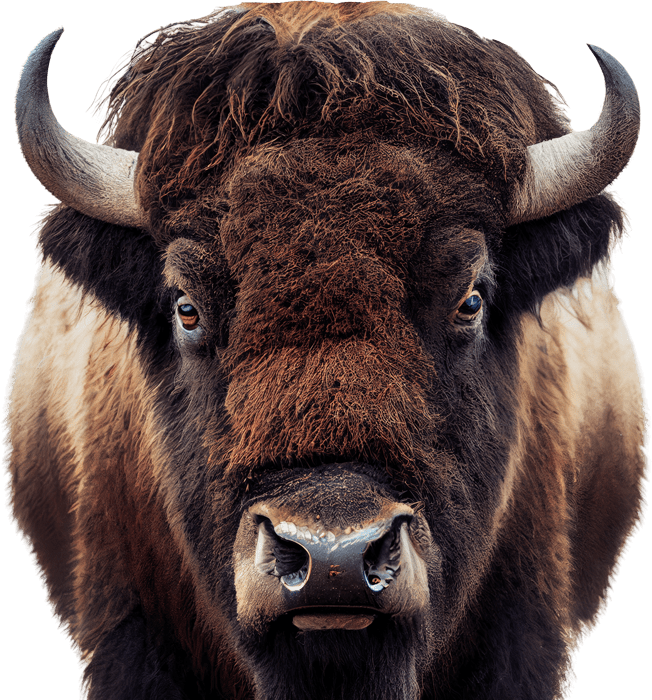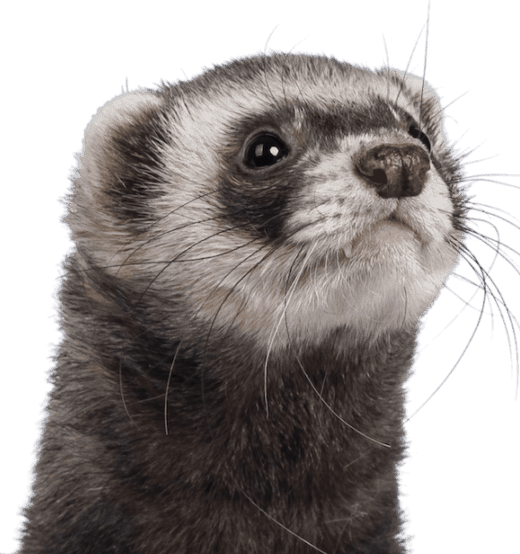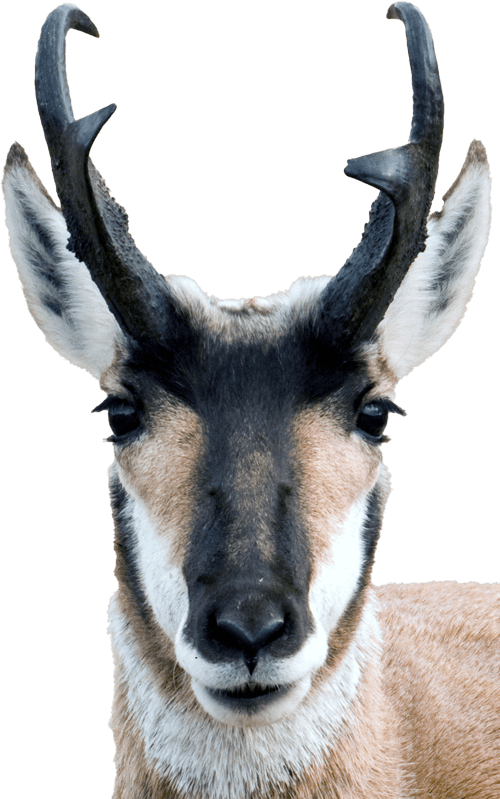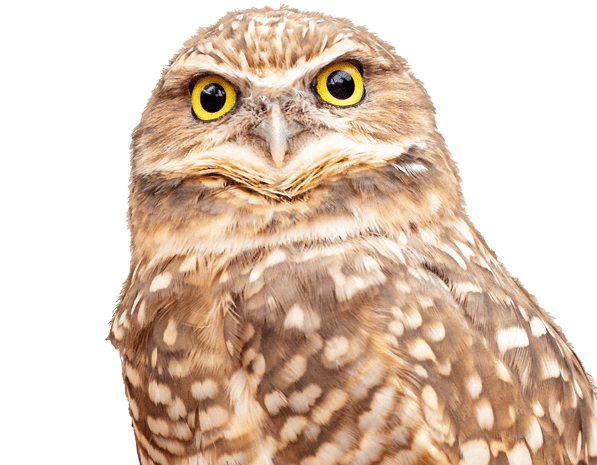Meet the Residents
- Photo by Kristi Odom
The Southern Plains Land Trust preserves are home to a rich diversity of wildlife and plants.
Below, we highlight seven target species, each representing a broader community of flora and fauna.
American Bison
Scientific Name
Bison bison bison (yup, three times!)
History
Ecology
How Your Support Helps
Black-Tailed Prairie Dog
Prairie dogs are the raison d’etre upon which the Southern Plains Land Trust was founded. A group of prairie wildlife protectors purchased our first preserve, Fresh Tracks, to provide a refuge for these native rodents that were being persecuted in urban and suburban areas of the Front Range. We now have more than 2,500 acres of prairie dogs colonies!
Scientific Name
History
Ecology
Prairie dogs live in colonies in underground burrows called ‘coteries’. Their burrows are usually U-shaped with chambers connected by tunnels, and can go 7 to 15 feet deep. Throughout the town, they cut down anything growing taller than about 6 inches, which allows the prairie dogs to better see predators. The mound of earth at the entrance of burrows helps to prevent the burrows from flooding. Multiple entrances allow for an escape route in the event that a predator gets into the burrow.
Grasses and leafy vegetation make up 98 percent of black-tailed prairie dog’s diet, though they occasionally eat arthropods such as grasshoppers, bugs, and beetles. Their primarily herbivorous diet provides all of the moisture content that they need—prairie dogs do not need to drink water.
How Your Support Helps
Black-Footed Ferret
The black-footed ferret is North America’s most endangered mammal. Once believed to be extinct, the ferret is now the subject of a nationwide restoration effort on the Great Plains coordinated by the U.S. Fish and Wildlife Service, with approximately 350 individuals persisting at 18 different recovery sites across 11 U.S. states. Due to our persistence in maintaining a large and healthy prairie-dog population (the ferret’s main prey), SPLT was able to reintroduce this magnificent species to Heartland Ranch.
Scientific Name
History
After being thought to be completely extinct, its rediscovery in Wyoming in 1981 initiated collaborative efforts among various stakeholders to recover the species. Through initiatives such as captive breeding, reintroductions, habitat preservation, and cloning, the population of black-footed ferrets has been clinging to survival.. Despite significant progress in their recovery, challenges persist, with habitat loss, predation, and disease remaining significant threats. Biologists suggest that achieving a population of 3,000 adult ferrets in their natural habitat is necessary for the successful restoration of this endangered species.
Ecology
How Your Support Helps
Western Meadowlark
Scientific Name
History
Meadowlarks hold significance in the folklore of various Native American tribes, each attributing distinct meanings to their presence. Among the Sioux tribes, Meadowlarks are revered as symbols of friendship and loyalty, and there is a strict taboo against harming them. The melodious song of the meadowlark is considered a harbinger of good fortune by many Sioux people, and historically, it was believed that meadowlark whistles could summon buffalo herds. Conversely, the Arikara Indians interpret the meadowlark’s call as admonishing rather than melodious. The Arikara name for “meadowlark” directly translates to “woman’s nagging.” In the Blackfoot tribe, meadowlarks symbolize peace, and their presence is regarded as an assurance of safety, signaling that a camp or village is protected from potential attacks.
(from: https://www.native-languages.org/legends-meadowlark.htm)
Ecology
Western Meadowlarks inhabit open grasslands, prairies, meadows, and certain agricultural fields across a wide altitude range from sea level up to 10,000 feet. They tend to avoid wooded areas and regions with dense shrubbery. In the winter, they primarily scavenge for seeds on sparsely vegetated terrain, a behavior that contrasts with that of the Eastern Meadowlark, which typically prefers more densely vegetated habitats.
Their diet consists of both grain and weed seeds, supplemented by insects. Their feeding habits exhibit a clear seasonal pattern: during the winter and early spring, they predominantly forage for grain, while they switch to weed seeds in the fall. In the late spring and summer, they employ a probing technique, delving into the soil and beneath objects like dirt clods and manure piles to uncover beetles, ants, cutworms, grasshoppers, and crickets. Meadowlarks utilize a feeding behavior known as “gaping,” wherein they insert their bill into the ground or other substrates and pry it open to access seeds and insects that are typically beyond the reach of many other bird species. Occasionally, they may consume the eggs of other grassland bird species, and during harsh winters, they may resort to feeding on carcasses such as roadkill.
How Your Support Helps
We remove human-made structures of our land that serve as a high perch for potential predators, such as birds of prey. These structures, such as electricity poles and cattle corrals, do not belong in a natural habitat, as grasslands are open and flat. All grassland birds profit from not having this extra anthropogenically created pressure.
Pronghorn
Scientific Name
History
The natural range of pronghorn used to extend from southern Canada to northern Mexico. Today pronghorn are mainly found in the United States on the Great Plains, in Wyoming, Montana, and New Mexico. Some of the highest numbers of pronghorn are in the Red Desert and Yellowstone ecosystems.
The first Europeans who explored the American West were surprised to see an antelope in North America, but Native Americans were very familiar with this animal; 330 different names for pronghorn have been recorded from 219 Native American languages. They were an important source of animal protein and were extensively hunted throughout their range.
Ecology
Pronghorn can run at speeds close to 60 miles an hour. They have evolved this capacity in order to outsmart their predator: a cheetah (Miracinonyx spp.) used to live on the Great Plains. Although pronghorn are not as fast as cheetahs, they can maintain a fast speed for a longer period of time. Even more amazing than its speed is the pronghorn’s migration. Herds of pronghorn migrate 150 miles each way between Wyoming’s Upper Green River Basin and Grand Teton National Park. The only other land animal to travel farther in North America is the caribou.
Pronghorn are herbivores. They eat grasses, forbes, sagebrush, and other prairie plants. Pronghorn digest their food twice. After they swallow food, it passes through the stomach and then the pronghorn regurgitates it. This process allows the pronghorn to break the plant material into smaller pieces so that more nutrients are absorbed. They seldom drink water because they receive most of their water from the plants they eat.
How Your Support Helps
North American Beaver
Scientific Name
History
Ecology
Beavers are well known for their dam-building. They maintain a pond by reacting to the sound of running water, and damming it up with tree branches and mud. The purpose of the dam is to provide water around their lodges that is deep enough to not freeze solid in winter. The dams also flood areas of surrounding forest, giving the beaver safe access to an important food supply.
Beavers are herbivores and do not eat fish, contrary to popular belief. Beavers consume a mix of herbaceous and woody plants, which depends on region and season. They prefer aspen and other poplars, but also eat other tree species and eat cattails, water lilies, and other aquatic vegetation, especially in the early spring. The beaver is a keystone species, increasing biodiversity in its territory through creation of ponds and wetlands.
How Your Support Helps
We work hard on riparian restoration by building one-rock dams to prevent bank erosion, by implementing beaver-dam-analogs or log jams, and by replanting native woody vegetation along the streams on our preserves. This will help the beaver return to its natural habitat.
Burrowing Owl
Scientific Name
History
Ecology
These owls inhabit underground burrows, either self-dug or used from creatures like prairie dogs, ground squirrels, or tortoises. Burrowing Owls have a diverse diet, consuming both invertebrates and small vertebrates. While insects, notably grasshoppers, crickets, moths, and beetles, make up the majority of their food items, vertebrates makeup the bulk of their diet by mass. They are known to hunt a wide range of prey, including lizards, birds, mammals, and various other creatures such as dragonflies, scorpions, frogs, and even bats. Interestingly, females primarily capture insects, especially during daylight hours, while males predominantly target vertebrates, typically at night.
Prior to egg-laying, Burrowing Owls line the entrances to their burrows with animal dung, which attracts dung beetles and other insects that they subsequently capture and consume. Additionally, they may collect miscellaneous objects like bottle caps, bits of metal foil, or paper scraps near their burrow entrances, possibly as a means of signaling occupancy.
How Your Support Helps
American Bison
Scientific Name
Bison bison bison (yup, three times!)
History
Once upon a time, large herds of bison roamed the American plains, but they nearly got extinct due to both commercial hunting and slaughter during the 19th century. Additionally, the introduction of bovine diseases from domestic cattle further endangered them. Once numbering around 60 million, their population plummeted drastically within one century to a mere 541 individuals by 1890.
Ecology
Bison are herbivores that eat grass and other vegetation. They graze the prairie grasses at different heights, creating a mosaic pattern on the plains that provides nesting grounds for birds. They sometimes roll around on the ground to get a dust bath, which is known as wallowing. Their ‘wallows’ (depressions in the soil) fill with rainwater and offer breeding pools for amphibians and sources of drinking water for wildlife across the landscape.
How Your Support Helps
Black-Tailed Prairie Dog
Prairie dogs are the reason that the Southern Plains Land Trust was once founded. A group of prairie wildlife protectors realized that prairie dogs are not wanted in agricultural, range and urban landscapes and wanted to provide a refuge for these native rodents. We now have over 2500 acres of prairie dogs colonies!
Scientific Name
History
At the beginning of the twentieth century, prairie dogs occupied 100 million acres of Great Plains down the eastern side of the Rockies from Canada to Mexico. Today, that range has decreased to less than 2 million acres. The reason for their decrease is that they are persecuted by shooting and poisoning, and they are susceptible to plague (an introduced disease). Human-caused changes to the grasslands stemming from crop agriculture, livestock grazing, energy development, residential and commercial development have decimated their native range.
Ecology
Prairie dogs live in colonies in underground burrows called ‘coteries’. Their burrows are usually U-shaped with chambers connected by tunnels, and can go 7 to 15 feet deep. Throughout the town, they cut down anything growing taller than about 6 inches, which allows the prairie dogs to better see predators. The mound of earth at the entrance of burrows helps to keep the burrows from flooding. Multiple entrances allow for an escape route in the event a predator gets into the burrow.
Grasses and leafy vegetation make up 98 percent of black-tailed prairie dog’s diet. They occasionally eat grasshoppers, bugs and beetles. Their primarily herbivorous diet provides all of the moisture content that they need—prairie dogs do not need to drink water.
How Your Support Helps
We actively prevent the prairie dogs on our preserves from attracting plague by treating them with specific medicine. This dust-like substance is put around their burrows and when the prairie dog enters or exits, the dust spreads to its fur. The costs for these treatments are covered by donations from partners and supporters.
Black-Footed Ferret
Scientific Name
History
Ecology
How Your Support Helps
Western Meadowlark
Scientific Name
History
Meadowlarks hold significance in the folklore of various Native American tribes, each attributing distinct meanings to their presence. Among the Sioux tribes, Meadowlarks are revered as symbols of friendship and loyalty, and there is a strict taboo against harming them. The melodious song of the meadowlark is considered a harbinger of good fortune by many Sioux people, and historically, it was believed that meadowlark whistles could summon buffalo herds. Conversely, the Arikara Indians interpret the meadowlark’s call as admonishing rather than melodious. The Arikara name for “meadowlark” directly translates to “woman’s nagging.” In the Blackfoot tribe, meadowlarks symbolize peace, and their presence is regarded as an assurance of safety, signaling that a camp or village is protected from potential attacks.
(from: https://www.native-languages.org/legends-meadowlark.htm)
Ecology
Western Meadowlarks inhabit open grasslands, prairies, meadows, and certain agricultural fields across a wide altitude range from sea level up to 10,000 feet. They tend to avoid wooded areas and regions with dense shrubbery. In the winter, they primarily scavenge for seeds on sparsely vegetated terrain, a behavior that contrasts with that of the Eastern Meadowlark, which typically prefers more densely vegetated habitats.
Their diet consists of both grain and weed seeds, supplemented by insects. Their feeding habits exhibit a clear seasonal pattern: during the winter and early spring, they predominantly forage for grain, while they switch to weed seeds in the fall. In the late spring and summer, they employ a probing technique, delving into the soil and beneath objects like dirt clods and manure piles to uncover beetles, ants, cutworms, grasshoppers, and crickets. Meadowlarks utilize a feeding behavior known as “gaping,” wherein they insert their bill into the ground or other substrates and pry it open to access seeds and insects that are typically beyond the reach of many other bird species. Occasionally, they may consume the eggs of other grassland bird species, and during harsh winters, they may resort to feeding on carcasses such as roadkill.
How Your Support Helps
We remove human-made structures of our land that serve as a high perch for potential predators, such as birds of prey. These structures, such as electricity poles and cattle corrals, do not belong in a natural habitat, as grasslands are open and flat. All grassland birds profit from not having this extra anthropogenically created pressure.
Pronghorn
Scientific Name
History
The natural range of pronghorn used to extend from southern Canada to northern Mexico. Today pronghorn are mainly found in the United States on the Great Plains, in Wyoming, Montana, and New Mexico. Some of the highest numbers of pronghorn are in the Red Desert and Yellowstone ecosystems.
The first Europeans who explored the American West were surprised to see an antelope in North America, but Native Americans were very familiar with this animal; 330 different names for pronghorn have been recorded from 219 Native American languages. They were an important source of animal protein and were extensively hunted throughout their range.
Ecology
Pronghorn can run at speeds close to 60 miles an hour. They have evolved this capacity in order to outsmart their predator: a cheetah used to live on the Great Plains. Although pronghorn are not as fast as cheetahs, they can maintain a fast speed for a longer period of time. Even more amazing than its speed is the pronghorn’s migration. Herds of pronghorn migrate 150 miles each way between Wyoming’s Upper Green River Basin and Grand Teton National Park. The only other land animal to travel farther in North America is the caribou.
Pronghorn are herbivores. They eat grasses, forbes, sagebrush, and other prairie plants.
Pronghorn digest their food twice. After they swallow food, it passes through the stomach and then the pronghorn regurgitates it. This process allows the pronghorn to break the plant material into smaller pieces so that more nutrients are absorbed. They seldom drink water because they receive most of their water from the plants they eat.
How Your Support Helps
North American Beaver
A region once known for its cottonwoods and beaver dams, is now hard to imagine when looking at our surrounding landscape. We want to bring back the beaver and its positive ecological effects to this region that is scarred by decades of overgrazing.
Scientific Name
History
Ecology
Beavers are well known for their dam-building. They maintain a pond by reacting to the sound of running water, and damming it up with tree branches and mud. The purpose of the dam is to provide water around their lodges that is deep enough to not freeze solid in winter. The dams also flood areas of surrounding forest, giving the beaver safe access to an important food supply.
Beavers are herbivores and do not eat fish, which many people think. Beavers consume a mix of herbaceous and woody plants, which depends on region and season. They prefer aspen and other poplars, but also eat other tree species and eat cattails, water lilies, and other aquatic vegetation, especially in the early spring. The beaver is a keystone species, increasing biodiversity in its territory through creation of ponds and wetlands.
How Your Support Helps
We work hard on riparian restoration by building one-rock dams to prevent bank erosion, by implementing beaver-dam-analogs or log jams, and by replanting native woody vegetation along the streams on our preserves. This will help the beaver return to its natural habitat.
Burrowing Owl
Scientific Name
History
Ecology
These owls inhabit underground burrows, either self-dug or used from creatures like prairie dogs, ground squirrels, or tortoises. Burrowing Owls have a diverse diet, consuming both invertebrates and small vertebrates. While insects, notably grasshoppers, crickets, moths, and beetles, make up the majority of their food items, vertebrates makeup the bulk of their diet by mass. They are known to hunt a wide range of prey, including lizards, birds, mammals, and various other creatures such as dragonflies, scorpions, frogs, and even bats. Interestingly, females primarily capture insects, especially during daylight hours, while males predominantly target vertebrates, typically at night.
Prior to egg-laying, Burrowing Owls line the entrances to their burrows with animal dung, which attracts dung beetles and other insects that they subsequently capture and consume. Additionally, they may collect miscellaneous objects like bottle caps, bits of metal foil, or paper scraps near their burrow entrances, possibly as a means of signaling occupancy.
How Your Support Helps







